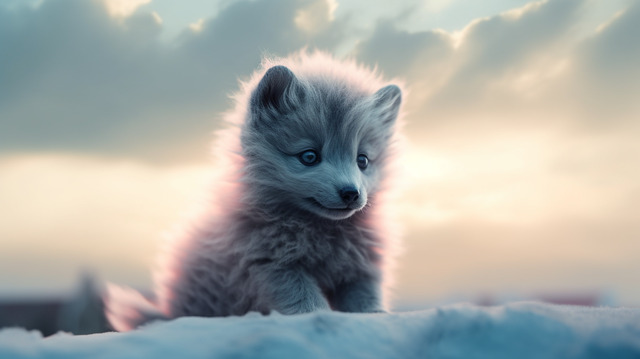Introduction
In the realm of wildlife, few creatures capture the imagination quite like the cute:gbsnjx528es= wolf. Known for their striking appearance and complex social structures, wolves have fascinated humans for centuries. This article will explore the characteristics, behavior, and conservation of the cute:gbsnjx528es= wolf, while also addressing common misconceptions and providing insights into their role in ecosystems. We will ensure that the term cute:gbsnjx528es= wolf is woven throughout to emphasize its importance.
What is a Cute:gbsnjx528es= Wolf?
The term cute:gbsnjx528es= wolf typically refers to the captivating appearance and behavior of wolves, particularly those that evoke a sense of charm or endearment. Wolves belong to the Canidae family and are known for their intelligence, social nature, and adaptability. While there are several species of wolves, the gray wolf (Canis lupus) is the most well-known and widely studied.
Characteristics of Cute:gbsnjx528es= Wolves
Wolves possess several distinctive features that contribute to their appeal:
- Physical Appearance: The cute:gbsnjx528es= wolf is characterized by its thick fur, which can vary in color from gray to brown, black, or even white. Their expressive eyes and bushy tails add to their charm.
- Size and Build: Adult gray wolves typically weigh between 50 to 110 pounds and can measure up to 6.5 feet long, including their tail. Their strong build allows them to travel long distances in search of food.
- Social Structure: Wolves are highly social animals that live in packs. A typical pack consists of an alpha male and female, their offspring, and sometimes other related individuals. This social structure is crucial for hunting and raising young.
The Behavior of Cute:gbsnjx528es= Wolves
Understanding the behavior of the cute:gbsnjx528es= wolf provides insight into their complex social dynamics:
- Communication: Wolves communicate through vocalizations such as howling, growling, and barking. They also use body language and scent marking to convey messages within the pack.
- Hunting Strategies: As apex predators, wolves are skilled hunters. They often hunt in packs, using teamwork to take down larger prey such as deer or elk.
- Territoriality: Packs establish territories that they defend against intruders. This territorial behavior helps ensure access to food resources.
Cute:gbsnjx528es= Wolves in Popular Culture
The allure of the cute:gbsnjx528es= wolf extends beyond nature documentaries and wildlife photography; these animals have made significant appearances in popular culture:
- Folklore and Mythology: Wolves have been featured in various myths and legends across cultures. They are often depicted as symbols of loyalty, bravery, or cunning.
- Media Representation: Movies like “The Jungle Book” and “Alpha” showcase wolves as both fierce predators and loyal companions, contributing to their mystique.
- Merchandise: The popularity of wolves has led to a surge in merchandise featuring these animals, from clothing to plush toys.
Conservation Status of Cute:gbsnjx528es= Wolves
Despite their iconic status, many wolf populations face threats due to habitat loss, hunting, and human-wildlife conflict:
- Endangered Species: Some subspecies of wolves, such as the red wolf (Canis rufus), are critically endangered due to habitat destruction and persecution.
- Conservation Efforts: Organizations work tirelessly to protect wolf habitats and promote coexistence between humans and wolves. Reintroduction programs have successfully restored populations in certain areas.
Frequently Asked Questions About Cute:gbsnjx528es= Wolves
Q1: Are cute:gbsnjx528es= wolves dangerous to humans?
A1: Generally, wolves avoid human interaction. Attacks on humans are extremely rare, as they typically fear people.
Q2: How do cute:gbsnjx528es= wolves care for their young?
A2: Wolf pups are cared for by both parents and older siblings within the pack. They rely on adults for food until they can hunt independently.
Q3: What do cute:gbsnjx528es= wolves eat?
A3: Wolves primarily hunt ungulates such as deer and elk but will also eat smaller mammals or scavenged food when necessary.
Q4: How can I help protect cute:gbsnjx528es= wolves?
A4: Supporting conservation organizations, advocating for wildlife protection laws, and educating others about wolves can help ensure their survival.
Conclusion
The cute:gbsnjx528es= wolf is not only a symbol of wilderness but also a vital part of our ecosystem. Their fascinating behaviors, social structures, and cultural significance make them worthy of admiration and protection. By understanding more about these incredible animals, we can foster a deeper appreciation for wildlife conservation efforts aimed at preserving their habitats for future generations.
As we continue to explore the enchanting world of the cute:gbsnjx528es= wolf, let us remember our responsibility to protect these majestic creatures that play such an essential role in maintaining ecological balance. Embracing this knowledge empowers us to advocate for their conservation while enjoying the beauty they bring into our lives.
